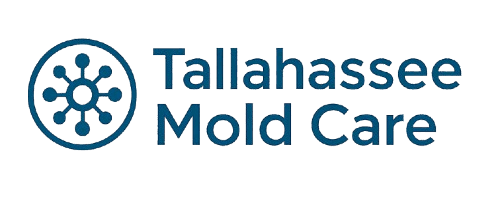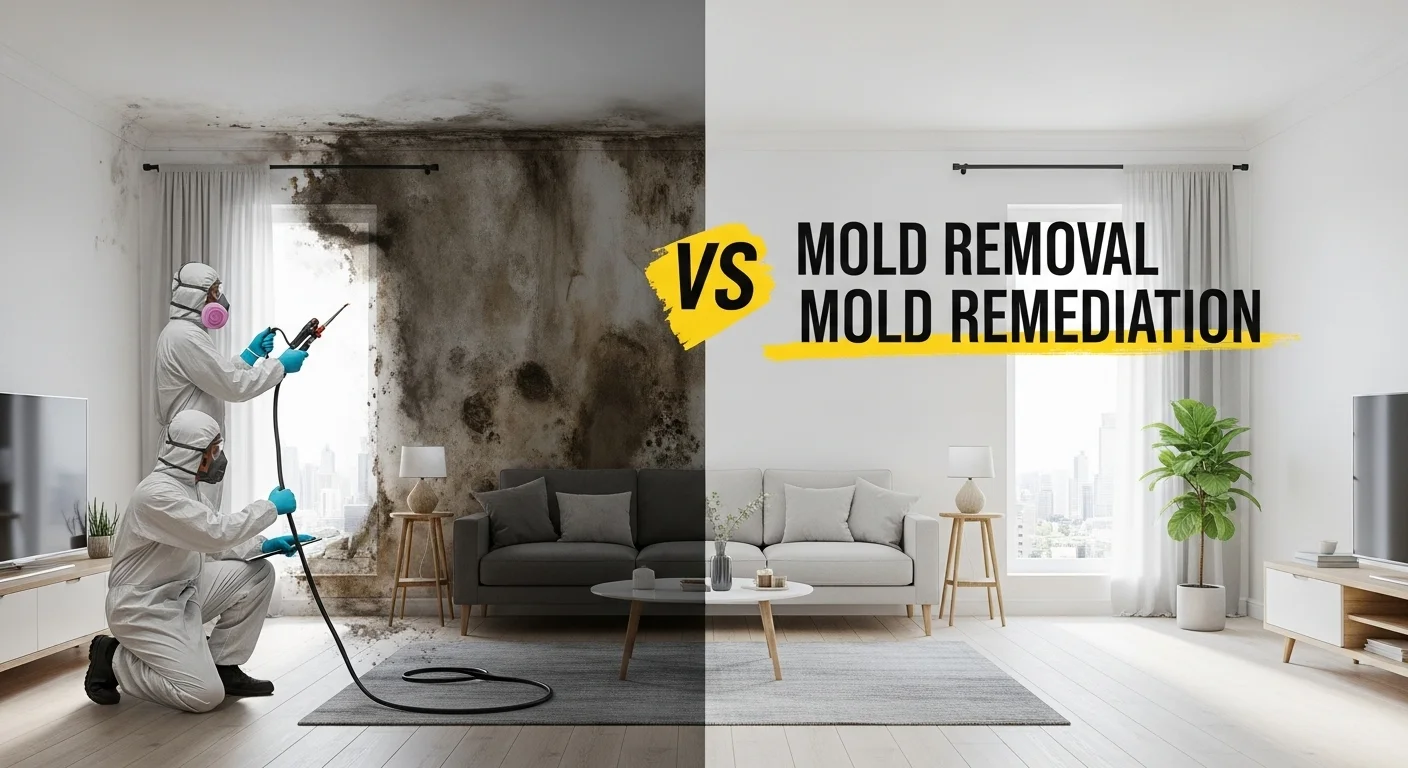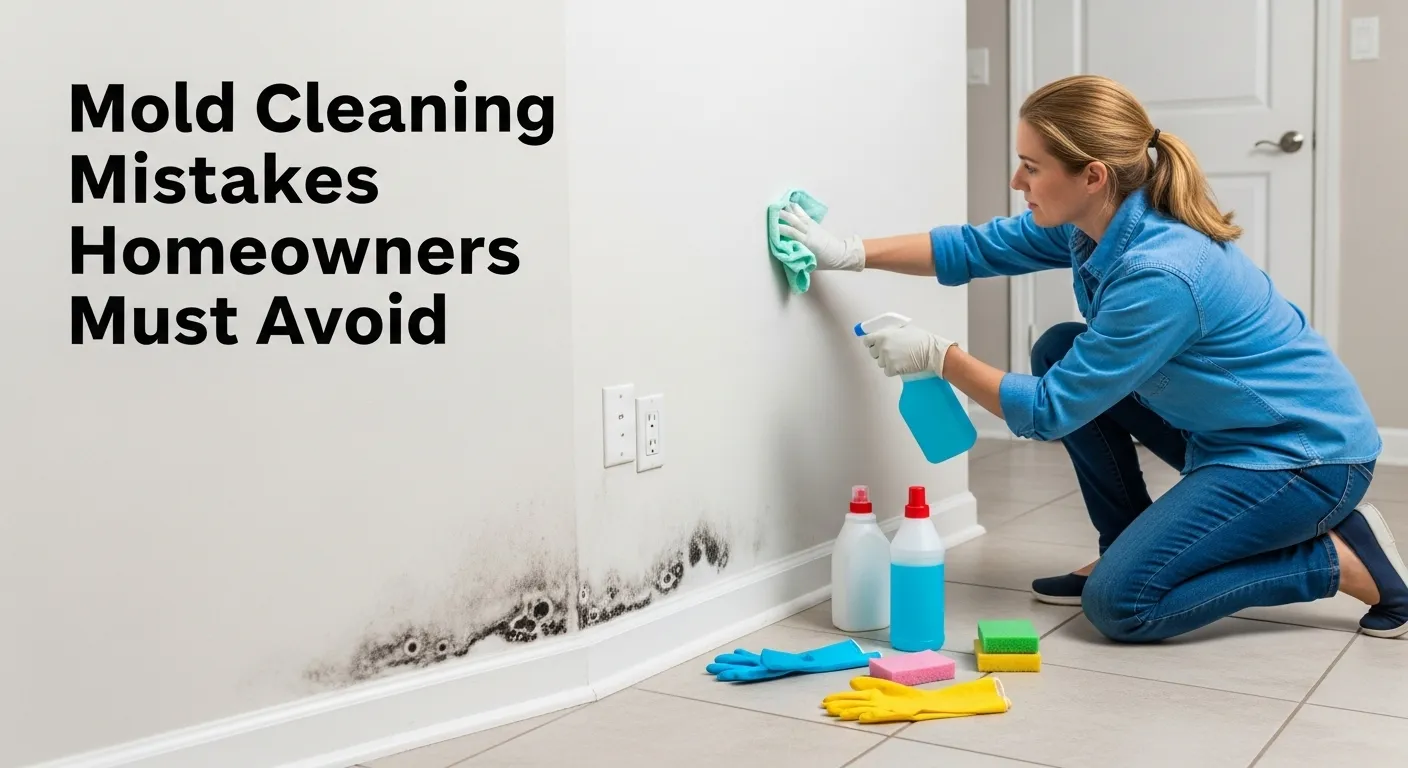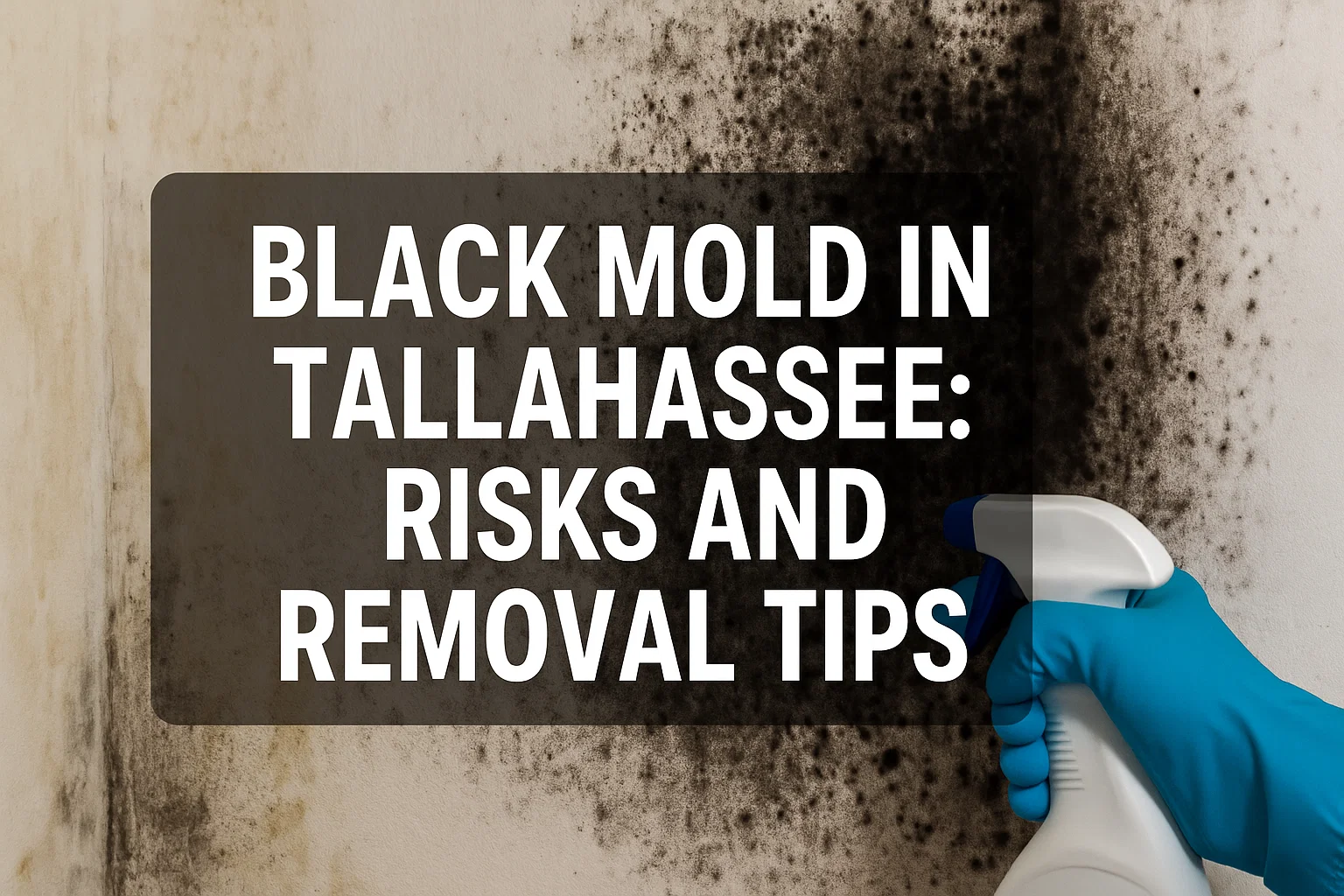In Tallahassee where humidity levels often remain around 70-90%, and frequent rainfall make the area particularly vulnerable to mold issues. Mold thrives in damp, moisture-rich environments, and unfortunately, Tallahassee’s weather conditions provide an ideal breeding ground for mold growth.
Understanding how mold forms and spreads can help you take the necessary steps to prevent and treat it effectively. Here is a complete guide on how Tallahassee’s climate triggers mold growth and how you can prevent it effectively.
Why Does Mold Grow in Tallahassee?
The consistent moisture and temperature fluctuations indoors and outdoors allow mold to spread quickly, affecting homes and businesses. Here are the most common aspects which help mold to grow in tallahassee.
Condensation
Condensation occurs when warm, moist air comes into contact with cooler surfaces, causing water vapor to turn into liquid water. In Tallahassee, the significant temperature differences between indoor air and outdoor air, especially during the summer months, cause moisture buildup on windows, walls, and ceilings. This water accumulation fosters the perfect environment for mold growth.
Heavy Rainfall and Hurricanes
Tallahassee is no stranger to tropical storms and hurricanes. These seasonal weather patterns bring heavy rainfall that can overwhelm drainage systems and flood properties. Flood Water seeps into homes, businesses, and infrastructure, providing a prime opportunity for mold to grow. Even minor flooding can lead to significant water damage and mold growth in just a matter of days.
Plumbing Issues and Appliance Leaks
Faulty plumbing and appliance leaks are another significant source of indoor flooding. Tallahassee’s older homes are particularly prone to issues such as leaking pipes or damaged water tanks. Leaky faucets or malfunctioning dishwashers can also create localized flooding, allowing moisture to linger in hidden spaces like cabinets, basements, and attics—areas where mold can thrive.
Water from Poor Drainage Systems
Many Tallahassee homes suffer from poor drainage systems that direct water towards foundations rather than away from them. This allows rainwater to seep into homes through cracks in the foundation, providing moisture that encourages mold growth. Over time, this can lead to costly structural damage and persistent mold problems.
Sprinklers and Over Watering Problems
Tallahassee’s homeowners often rely on sprinklers for maintaining their lawns and gardens. However, sprinklers that direct water toward exterior walls can create moisture buildup in areas prone to mold growth. Overwatering can lead to moisture seeping into the foundation and walls, especially in poorly constructed or maintained homes.
Insufficient Ventilation Leading to High Humidity
Improper ventilation in areas like kitchens, bathrooms, and basements allows humidity to rise. Without adequate air circulation, moisture from cooking, showering, or washing clothes can build up that create ideal conditions for mold to thrive.
Indoor Drying- Effects
In Tallahassee, drying clothes indoors can lead to increased moisture in the air. The moisture from wet clothes evaporates, raising indoor humidity and creating favorable conditions for mold. This is especially problematic in areas with limited airflow or ventilation.
Where Mold Hides? Common Growth Spots You Should Know
Mold is not picky when it comes to where it grows. The persistent moisture in the air makes it easy to thrive in any area with a source of water or excessive humidity. Here are common locations where mold is often found in both residential and commercial properties in Tallahassee.
Typical Areas of Mold Growth in Homes
The most common locations for mold growth in homes include:
How Mold Harms Homes and Endangers Health
Mold poses serious health risks to families. The spores released by mold can cause respiratory issues, allergies, and aggravate asthma, particularly in children, the elderly, and those with existing health conditions.
Additionally, mold can damage the structural integrity of a home. Wood, drywall, and insulation can weaken over time, leading to costly repairs. Mold growth in hidden spaces like behind walls or under flooring can go unnoticed that increase the long-term damage.
Commercial Properties
Mold in commercial properties can be a significant issue, particularly in areas such as offices, retail stores, and warehouses. Common locations for mold growth in commercial spaces include:
Mold’s Impact on Business Operations
For businesses, mold can cause significant disruption and unexpected costs. Mold removal can be expensive, and depending on the severity of the infestation, it may take time away from business operations. In commercial spaces like offices and stores, mold can also affect the health of employees and customers, leading to potential liability issues.
For warehouses, mold growth on stored goods can result in product damage and financial loss. Additionally, businesses may face downtime due to mold remediation, further impacting operations and revenue.
The Growth Cycle of Mold in Tallahassee
Mold is a persistent problem in Tallahassee due to its Damp, subtropical climate. Understanding how mold develops and spreads over time can help you identify and address it before it becomes a serious issue. Mold growth happens in several distinct stages, each building upon the previous one. Here’s how it typically develops:
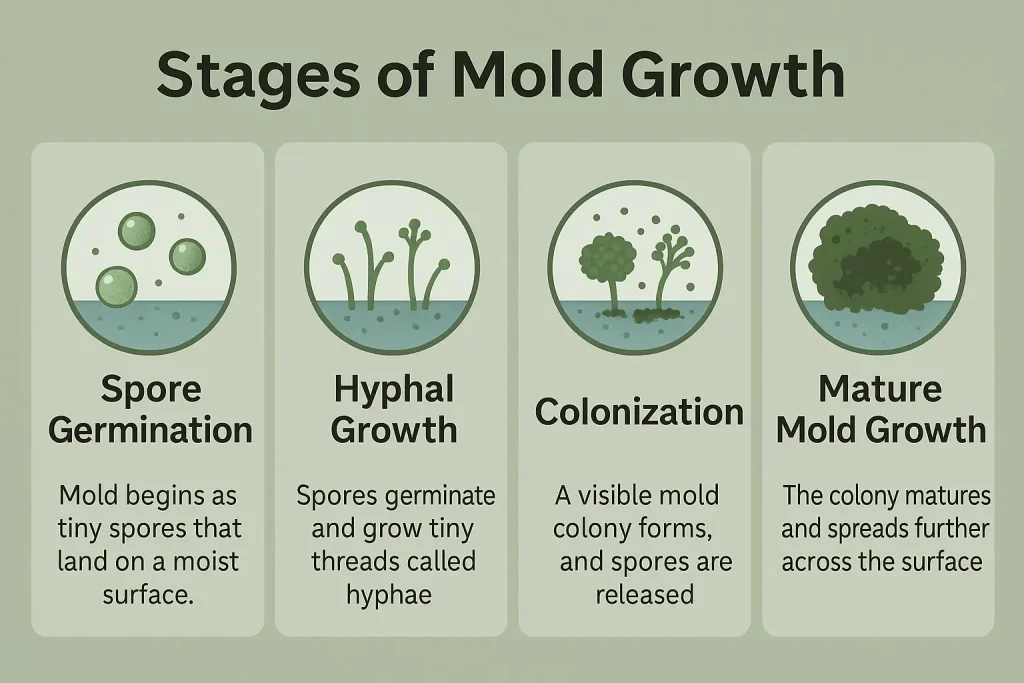
Speed of Mold Growth in Tallahassee’s Climate
Tallahassee’s consistently high humidity levels significantly accelerate the mold growth cycle. The area’s humidity often hovers around 70-90%, allowing spores to germinate and colonize within just 24 to 48 hours.
This rapid growth is especially concerning for homeowners and businesses, as it can lead to more significant damage and health risks in a short amount of time. The constant exposure to moisture, combined with high temperatures, ensures that mold will continue to spread if the issue isn’t addressed quickly.
Essential Mold Prevention Strategies for Tallahassee Residents
Mold prevention is far more cost-effective and less stressful than dealing with an infestation. Tallahassee’s climate means that homeowners and business owners need to take proactive steps to minimize mold risks. With the right prevention strategies, mold can be kept at bay, ensuring the health of residents and the integrity of the property.
Proactive Measures Homeowners and Business Owners Can Take
Both homeowners and business owners can implement several strategies to prevent mold growth. By making small changes and staying vigilant, you can protect your property and your health from the damaging effects of mold.
Mold Prevention Tips
Follow these practical steps to reduce moisture, improve ventilation, and keep mold from taking hold in your home or business.
Dehumidification Techniques
It’s essential to have exhaust fans in kitchens, bathrooms, and laundry rooms to expel moist air. Using dehumidifiers in areas prone to dampness, like basements or attics, can help maintain the indoor humidity level at a safe range (ideally between 30-50%). This limits the moisture mold needs to grow.
Regular Plumbing Inspections and Maintenance
Regular plumbing checks are vital for preventing leaks and water damage. Even small leaks can contribute to mold growth, especially when combined with Tallahassee’s high humidity. Ensure that pipes, faucets, and appliances are properly maintained. Fix leaks promptly and inspect for any signs of water damage, particularly in hidden spaces such as behind walls or under floors.
Installing Moisture Barriers in Basements and Attics
Moisture barriers are an excellent way to keep dampness out of basements and attics, which are common mold hotspots. Vapor barriers, such as plastic sheeting, can be installed on floors and walls to prevent moisture from seeping into these areas.
Using Mold-Resistant Paint and Materials in Key Areas
For areas prone to mold growth, such as bathrooms, kitchens, and basements, consider using mold-resistant paint and building materials. These materials are specially designed to resist moisture and mold growth, providing an extra layer of protection. In Tallahassee, using these materials can be a game-changer in the battle against mold.
Cleaning and Inspecting HVAC Systems Regularly
HVAC systems are often a Growth zone for mold. Regularly cleaning air ducts, filters, and condensation lines is essential for preventing mold buildup. In Tallahassee, where the air is often damp, HVAC systems are particularly vulnerable to mold growth. Routine inspection and maintenance can help keep your system clean and your indoor air quality healthy.
Our Proven Mold Remediation Process
At Tallahassee Mold Care, we follow a comprehensive, step-by-step process to ensure that mold is safely and effectively removed from your property. Mold remediation is not just about removing visible mold; it’s about addressing the root cause of the problem, ensuring long-term prevention, and restoring a safe environment for your family or business. Here’s an overview of our mold remediation process.
1)-Inspection and Assessment
The first step in our mold remediation process is a thorough inspection of your property. We identify the source of the mold problem and assess the extent of the damage. This includes checking areas that may not be immediately visible, such as behind walls, under floors, or in HVAC systems. Our trained specialists use advanced tools like moisture meters and thermal cameras to detect hidden mold. This step is critical for understanding the full scope of the problem, ensuring we take the right approach for removal.
2)-Containment and Removal
Once the mold problem is identified, the next step is to contain the affected area to prevent the mold from spreading to other parts of the property. We set up barriers and use negative air pressure to isolate the contaminated areas.
3)-Cleaning and Disinfection
After removing the mold, we move to the cleaning and disinfection stage. This is essential to ensure that mold does not return. We treat all affected surfaces with mold-killing solutions that are safe for both humans and pets. Any porous materials such as drywall or insulation that cannot be cleaned effectively may need to be replaced. The goal is to eliminate all spores, disinfect the area thoroughly, and restore a healthy environment.
4)-Final Inspection and Preventative Measures
The final step in the mold remediation process is a final inspection to ensure that the property is completely mold-free. We check for any signs of mold regrowth and make sure that the area is safe for occupancy. In addition, we provide preventative measures to reduce the risk of mold recurrence. This can include recommendations on improving ventilation, repairing plumbing issues, or installing moisture barriers to address any underlying moisture problems.
Why Tallahassee Mold Care is the Best Choice for Mold Remediation
We are fully committed to the principles of Expertise, Authoritativeness, and Trustworthiness (EEAT), which are essential for providing exceptional mold remediation services. Our team is highly trained and knowledgeable about the latest mold removal techniques and products.
We use cutting-edge equipment and environmentally friendly mold treatment methods to ensure your property is mold-free and safe. Our transparent processes, honest communication, and consistent delivery of high-quality results have earned us a reputation as the best choice for mold remediation in Tallahassee.
Final Thoughts
Understanding the causes of mold, such as condensation, plumbing leaks, and poor ventilation, is the first step in prevention. By implementing proactive strategies like controlling humidity, maintaining proper ventilation, and performing regular inspections, you can significantly reduce the risk of mold developing in your property.
FAQs
What are the common signs of mold growth in Tallahassee homes?
Common signs of mold growth in Tallahassee homes include visible black, green, or white spots on walls, ceilings, or floors, a musty or earthy smell, and increased humidity or dampness in certain areas, like basements or bathrooms. If you notice peeling paint, discolored walls, or respiratory issues such as coughing, sneezing, or difficulty breathing, it could indicate a mold problem.
How can I prevent mold from growing in my bathroom?
To prevent mold growth in your bathroom, make sure to use an exhaust fan during and after showers to expel moisture. Wipe down surfaces regularly to remove excess water, and keep shower curtains or glass doors dry. Fix any plumbing leaks promptly, and clean grout lines frequently. Additionally, using a dehumidifier or installing a moisture barrier can help reduce humidity levels.
Is mold removal covered by insurance in Florida?
Mold removal coverage depends on your insurance policy. Typically, homeowner’s insurance in Florida may cover mold removal if it’s caused by a covered peril, such as a burst pipe or storm damage. However, mold caused by neglect or lack of maintenance may not be covered. It’s essential to check with your insurance provider for specific details about your policy’s coverage.
How long does mold remediation take in Tallahassee?
The duration of mold remediation in Tallahassee can vary depending on the size and severity of the mold problem. Small, localized issues may take a few hours to a day to resolve, while larger infestations may take several days. Our team at Tallahassee Mold Care will provide an estimated timeline based on your specific situation after performing a thorough inspection.
Why is mold more common in Tallahassee than in other cities?
The combination of high humidity levels, frequent rainfall, and warm temperatures throughout the year provides an ideal breeding ground for mold spores in tallahassee. In addition, Tallahassee’s older homes and buildings, along with poorly maintained drainage systems, can contribute to moisture accumulation, making mold problems more prevalent in this area compared to other cities with drier climates.
